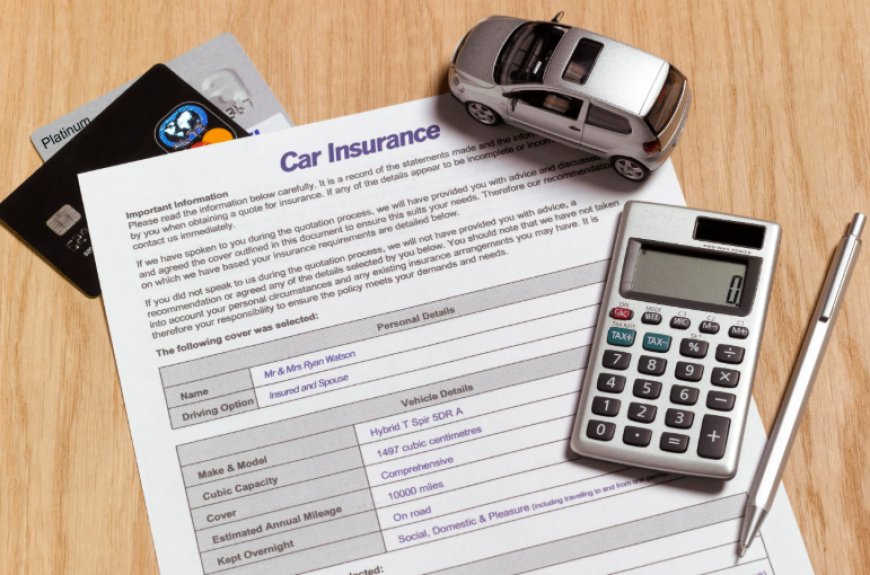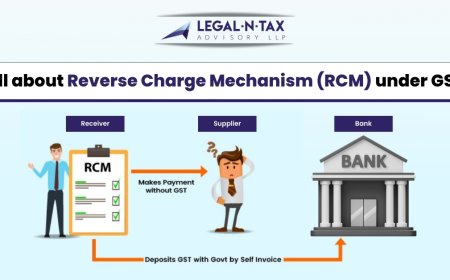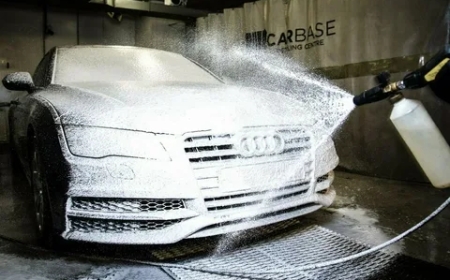Top 7 Factors That Make Car Insurance So Expensive
Wondering why car insurance is so expensive? Discover the top 7 reasons behind high premiums and learn how you can potentially lower your rates today.

If youve ever opened your car insurance bill and asked, Why is car insurance so expensive?youre not alone. Many drivers, especially in todays economy, are feeling the sting of rising premiums. While it might seem like insurers are charging more just because they can, there are real reasons behind the cost.
In this blog, well break down the top 7 factors that make car insurance so expensive, and offer tips on what you can do about it. Whether youre a new driver, a parent adding a teen to your policy, or simply trying to save, this guide will help you understand whats behind the price tagand how to make smarter decisions.
1.Your Driving Record Matters More Than You Think
Lets start with one of the most obvious (but most critical) factors: your driving history.
If you have a clean record, youre likely to pay less. But if your report includes speeding tickets, DUIs, accidents, or claims, insurers see you as a higher riskand charge you accordingly.
Heres how it works:
-
One speeding ticket can raise your premium by 20% or more.
-
At-fault accidents may stick to your record for 35 years.
-
DUIs or reckless driving violations can result in sky-high premiumsor even policy denial.
Tip: Drive safely, obey traffic laws, and consider defensive driving courses. Not only can you improve your record, but many insurers offer discounts for course completion.
2.Where You Live Plays a Huge Role
Your ZIP code might not feel important, but its a major pricing factor.
Car insurance is more expensive in areas with:
-
High traffic congestion
-
Frequent thefts or vandalism
-
More accidents
-
Expensive medical or repair costs
For example, drivers in large urban areas like Los Angeles or New York usually pay more than those in rural communities. Thats because urban environments have more people, more vehicles, and more claims.
Tip: While you cant always choose where you live, you can consider parking your car in a garage or secure location, which could lower your premium.
3.The Car You Drive Makes a Big Difference
Not all cars are created equal in the eyes of an insurance company. Some vehicles cost more to insure than others, even if their sticker price is similar.
Insurers look at:
-
Repair costs: Luxury and foreign cars typically cost more to fix.
-
Safety ratings: Cars with high safety ratings often get better rates.
-
Theft rates: Frequently stolen vehicles can drive up your premium.
-
Engine size and performance: Sports cars are riskier and more expensive to insure.
Tip: Before buying a car, research insurance costs for that specific model. Sometimes a different trim or engine size can significantly lower your rates.
4.Your Age and Gender Affect Your Premiums
Whether its fair or not, age and gender play a big role in how insurance companies calculate risk.
Heres what the data shows:
-
Teen drivers (especially males) have the highest accident rates, and therefore the highest premiums.
-
Drivers under 25 tend to pay more, while those between 30 and 60 usually see better rates.
-
Senior drivers may also face higher rates due to slower reflexes and increased accident risk.
Tip: If youre a younger driver, ask about good student discounts, safe driving programs, or being added to a parents policy to save money.
5.Low Credit Scores Can Cost You
Heres a factor many people overlook: your credit score. In most states, insurers use your credit history to determine your insurance rate. Why? Because studies show that people with lower credit scores tend to file more claims.
If you have poor or limited credit, insurers may see you as a higher riskeven if youve never filed a claim.
Tip: Work on improving your credit by paying bills on time, lowering credit card debt, and checking your report for errors. Over time, better credit could mean better insurance rates.
6.The Type and Amount of Coverage You Choose
If youre wondering why your premium is higher than your friends, it could come down to coverage.
There are two main components:
-
The level of coverage Minimum liability is cheaper but offers less protection. Full coverage (liability + collision + comprehensive) costs more but gives you more security.
-
Deductibles A lower deductible means your insurer pays more in the event of a claim, so youll pay more upfront in premiums.
Tip: Choose coverage that matches your needs and budget. If your car is older, consider dropping collision coverage. Raising your deductible can also lower your premium.
7.Claims History and Frequency Matter
Every time you file a claim, your insurer keeps track. Frequent claimsespecially at-fault onessignal to the company that you may be a risk. Over time, that risk is reflected in your premium.
This includes:
-
Small claims (like minor damage)
-
Comprehensive claims (such as hail or theft)
-
At-fault accidents
Tip: Consider whether it's worth filing small claims. Sometimes, paying out-of-pocket for minor issues can save you more in the long run.
Bonus Factor:Rising Industry-Wide Costs
Even if youre a model driver with excellent credit, your rate might still go up. Why?
The car insurance industry itself is facing rising costs due to:
-
Inflation: Labor and parts for repairs are more expensive.
-
Medical bills: Healthcare costs after accidents have skyrocketed.
-
Increased accidents: More distracted driving and traffic congestion means more claims.
-
Natural disasters: Floods, hurricanes, and wildfires are leading to more comprehensive claims.
This means that sometimes, everyones rates go upeven if you didnt do anything wrong.
How to Lower Your Car Insurance Costs
If youre frustrated with how car insurance is so expensive, here are a few quick ways to cut costs:
-
Shop around every 612 months and compare quotes.
-
Bundle your policies (home, renters, or life) for a discount.
-
Ask about discounts like multi-car, safe driver, good student, or low mileage.
-
Install safety devices like anti-theft systems or dashcams.
-
Join usage-based programs where your premium is based on how you drive.
Final Thoughts
Car insurance feels expensive because, for many people, it is. But once you understand what drives those costslike your driving record, location, credit, and even the car you chooseyoure in a much better position to take control.
The key is to stay informed, stay safe, and always look for opportunities to lower your risk in the eyes of your insurer.
If youre still wondering, Why is car insurance so expensive for me?it might be time to reach out to your provider and request a full breakdown of your policy. Understanding the details could help you identify areas for savings and feel more empowered when it comes to your finances.
FAQs
1. Why is my car insurance so expensive even with a clean driving record?
Even with a spotless record, other factors like your location, age, type of car, and even your credit score can drive up your premium. Industry-wide increases due to inflation and claims trends also impact everyones rates.
2. Can switching insurance companies lower my premium?
Yes! Different companies calculate risk differently. Shopping around regularly and comparing quotes can often lead to significant savingssometimes hundreds of dollars a year.
3. Does paying off my car lower my insurance costs?
It can. When you own your car outright, you may have more flexibility in the type of coverage you choose. For example, you might drop full coverage if the cars value is low, which could lower your premium.







































